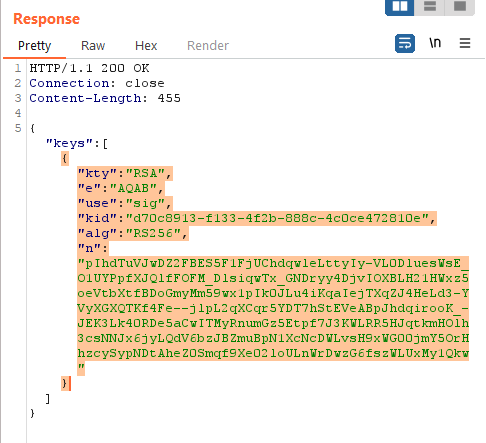- Privilege Escalation by algorithm confusion when server public key is exposed and JWT token algorithm is RS256(Change the algorithm from RS256 or asymmetric hashing algorithm attack to HS256 or symmetric algorithm)
This is not just only an algorithm confusion, it confuses you too. Yes, I am not kidding :)
Before going to understand the exploitation part, first understand what is RS256 and HS256
RS256 (Asymmetric Algorithm): It uses the private and public keys. The private key is never shared with anyone and this key is used for generating the signature. The server sends the JWT token by adding the signature to it. Public key is used by the JWT token receiver, who used this key to verify the signature.
HS256 (Symmetric Algorithm): It is a symmetric key hashing algorithm that uses one secret key. The key is used for both generating the signature and validating the signature. The secret key is shared with both parties.
Let's assume a scenario where you received a JWT token that uses an RS256 algorithm. After some recon, you found a server public key let's say you found it in /.well-known/jwks.json . For more details check the above JWK issue.
As per our scenario, we know that the JWT token is using RS256 that’s means the server is generating a signature by the private key and the JWT receiver is using a public key for verification.
So in the algorithm confusion attack, we use the public key that we found in our recon as a secret in the symmetric algorithm and sign our alter payload with that signature. Also, change the algorithm to HS256 before sending it to the server. So now when we send this modified JWT token to the server, we are telling the server that it is HS256 instead of RS256. If the server is misconfigured for the algorithm confusion, then the server may use the public key as the secret in the symmetric algorithm.
We used the public key as a secret in the symmetric algorithm for encrypting(Signing) the hash of payload and header. The server used the public key for decryption of the digital signature to take out the hash value.
The server also creates the hash of payload and header by using the same algorithm and key and after that server compares both hash values. As the same secret key is used by both attacker and server because of misconfiguration both the hash will match.
Learn about Digital Signature for more clarification.
Exploitation steps:
1. Capture the JWT request with the RS256 algorithm.
2. Send the request to the repeater
3. Let's say you found the public key /.well-known/jwks.json
4. Copy only highlighted part from the public key
5. Navigate to “JWT EditorKeys” Burp extender
6. Click on “New RSA Key” → paste the highlighted part in the key section without clicking on Generate → Click on ok
7. Right-click on the entry and then click on “Copy public key as PEM”
8. Paste the copied key into the decoder and encode it to Base64. Copied the encoded data
9. Now go back to “JWT EditorKeys” → Click on “New Symmetric Key” → Click on Generate → Replace the value of “k” with the value of Base64 encoded PEM that you just created.
10. Navigate back to the repeater request, and change the values whatever you want according to the request. Like in the above screenshot I have changed the “Sub” from “Wiener” to “administrator” for the administrative privileges.
11. Change the alg to HS256 from RS256
12. Click on “sign” in the “JSON web token” Burp extender and sign it with the symmetric key that you have created in the earlier step.
13. Send the request and you will get a successful response if a server is misconfigured to an algorithm confusion attack.
- Privilege Escalation by algorithm confusion when server public key is not exposed and JWT token algorithm is RS256(Change the algorithm from RS256 or asymmetric hashing algorithm attack to HS256 or symmetric algorithm)
Working on it and will update you soon….
JWT:
https://lazyhacker22.blogspot.com/2022/07/jwt-vulnerabilities-list-simple.html
https://lazyhacker22.blogspot.com/2022/06/what-is-jwt-json-web-tokens-simple.html


Comments
Post a Comment